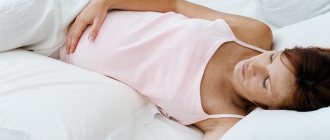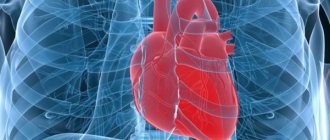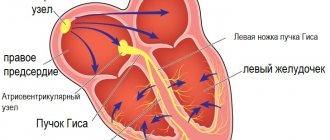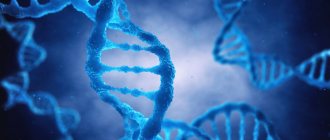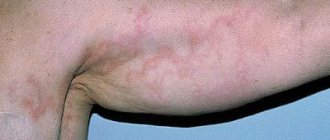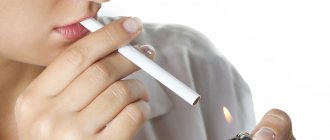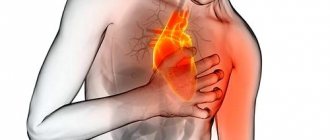According to statistics, 10 to 15% of the adult population in the world suffers from hemorrhoids. The pathology is equally common in both men and women. Since the disease affects the intimate areas of the human body, many people prefer to put up with unpleasant symptoms for many years and treat hemorrhoids at home without visiting a proctologist.
How does birch tar work for hemorrhoids?
Products based on birch tar, such as soap, ointments, candles, creams, are actively used in both folk and official medicine for healing wounds, even purulent ones, and for local anesthesia.
The most unpleasant and dangerous symptoms of hemorrhoids are the appearance of nodes, which is accompanied by severe itching, pain, and the formation of bleeding cracks. Bloody discharge especially increases during bowel movements. The use of tar soap with its pronounced antimicrobial effect allows you to ensure the necessary level of hygiene and reduce the likelihood of infection in inflamed tissues. And its analgesic and soothing effect helps reduce unpleasant itching and burning.
Birch and tar made from it can gradually eliminate itching and pain in the anal area
Pregnancy and condylomas
Condylomas are an alarming signal for pregnant women. HPV in the body of the expectant mother does not have a harmful effect on the fetus, but such a lady must be under the supervision of the attending physician at all times. You can resort to removing growths only at the 28th week of pregnancy, not earlier. If the formations have settled on the genitals, then there is a high probability that the baby will acquire HPV while passing through the birth canal. If the infection is not treated, then the unpleasant moments associated with thrush increase in pregnant women. The best option is a thorough examination before pregnancy for HPV and, if it is detected, mandatory and complete treatment.
The healing properties of birch tar in the treatment of hemorrhoids
Treatment of hemorrhoids with tar is one of the effective methods of combating this disease.
This is due to the healing effect that tar-based products have on inflamed hemorrhoids, anal fissures and on the condition of the vessels of the rectum:
- Wound healing. Achieved by accelerating metabolic and regeneration processes in tissues.
- Quick stop of bleeding.
- Reduced itching and pain.
- Elimination of swelling and swelling of inflamed tissues.
- Fighting pathogenic microorganisms.
All this helps to reduce hemorrhoids and accompanying unpleasant symptoms - both in the treatment of internal and external hemorrhoids.
Treatment
Condylomas and HPV require a systematic approach to treatment.
Medication
To combat condylomas in women and men, doctors act in three directions:
- against viruses;
- in order to increase immunity;
- for fortification of the patient.
Cycloferon and inosiplex act against HPV activation and its reproduction. Inferon and allokin-alpha stop viruses and help restore the immune system. To improve the general health of women and men, Immunal, Amixin, Poludan, etc. are prescribed. A complex of vitamins and minerals is also an essential component of treatment for condylomas.
Local
Condylomas are successfully treated using ointments and sprays of antiviral action (epigen-intim, condylen, etc.). Women and men will not have to think about condylomas if they are treated with inquimod, podophyllotoxin. For pregnant women, you can use trichloroacetic and nitric acids. Women need to fight condylomas in stages: first remove them, and then, or in parallel, act to reduce the number of viruses. Often (in every third woman) condylomas enter the stage of relapse (especially if preventive measures are not followed and the recommendations of the attending physician are ignored).
Removal
Methods for removing condylomas in modern medicine are varied:
- Electric coagulation. This method has disadvantages - many contraindications, painful procedure and long recovery.
- Cryotherapy. Condylomas are removed using liquid nitrogen. The positive aspects of this technique are the absence of scars, painless effects, and the absence of anesthesia.
- Surgical method. The growths are removed during surgery, and stitches are placed at the site of the wounds. Doctors use local anesthesia.
- Use of chemicals. This method is contraindicated during pregnancy and lactation.
- Laser therapy. Condylomas are removed with a laser beam; this is a treatment that does not affect healthy cells and leaves virtually no scars.
- Radiosurgical method. The use of a special device helps remove condylomas without contact with the body. Removal of growths is accompanied by simultaneous sealing of blood vessels. This technique is one of the most modern and in demand.
How can you use tar for hemorrhoids?
To get rid of the symptoms of hemorrhoids, there are many effective recipes. For the treatment of external hemorrhoids, baths, lotions, and ointments based on this component are suitable. You should also perform daily hygiene procedures using tar soap.
Tampons coated with Vishnevsky ointment or another mixture based on birch tar will help get rid of internal hemorrhoids.
Traditional medicine allows for internal use of the drug in the form of decoctions and infusions. But supporters of traditional methods of treatment strongly do not recommend the use of such recipes.
Steam and sitz baths for hemorrhoids
One of the most commonly used procedures to eliminate itching, redness, bleeding and swelling in the anus is baths.
To do this, you need to dilute 1 tablespoon of tar in 2 liters of warm water. These baths should be taken for 20 minutes daily.
Another way to use tar is steam baths. To do this, heat a brick (necessarily red) over a fire and place it at the bottom of a metal bucket. You need to drop 4-5 drops of birch tar onto the surface of the brick, then cover the bucket with a lid with a small hole and take steam baths while sitting.
It is best to carry out such procedures before bedtime.
External use of birch tar for the treatment of hemorrhoids
Compresses and lotions with tar have a positive effect on the formation of inflamed hemorrhoids:
You can also treat the disease through the use of steam baths
- Thoroughly clean the skin around the anus; use tar soap for washing.
- Take a piece of sterile gauze or bandage and apply a few drops of tar to the fabric.
- Apply to the source of the inflammatory process and secure with a band-aid if necessary.
To combat the symptoms of external hemorrhoids, you can also use creams and gels based on tar soap, for example, Vishnevsky ointment.
Preventing HPV infection
Condylomas must be prevented by preventive measures:
- use of contraceptives during sexual relations;
- increasing immunity;
- proper balanced nutrition;
- taking vitamins;
- compliance with hygiene standards;
- fight against bad habits;
- increasing stress resistance.
Regular visits to the doctor are a good preventative measure. The use of antiviral ointments, as well as vaccination against HPV, is prevention that will make people’s lives full.
Treatment of internal hemorrhoids with birch tar
If hemorrhoidal cones are located deep in the anus, you should use the product in the following ways:
- Tampons with birch tar. Apply tar to a cotton swab, insert it into the anus and leave overnight. Please note that upon contact of the product with the mucous membrane, itching and burning may occur.
- Candles with tar for hemorrhoids. To prepare such a candle, you need to take lamb or pork fat, mix it with tar and insert it into the anus overnight.
Methods of internal use of birch tar for hemorrhoids
Fans of alternative medicine recommend using tar internally to get rid of the symptoms of hemorrhoids. This can be done in various ways:
You can also treat hemorrhoids with tar by applying it internally.
- Tar dissolved in milk. You must initially add 1 drop of the product to a glass of milk. Then, over the course of 10 days, you should add one more drop. Then in reverse order bring to 2 drops. Such drinking improves the functioning of the gastrointestinal tract and generally has a beneficial effect on the body.
- Tar water. To prepare the product, you need to add 500 grams of tar to 4 liters of water. Infuse the drug for 2 days, then strain and take 100 ml in the morning before meals.
- Bread with birch tar. Apply 5 drops of the drug to a piece of bread and eat at night. Next time, apply one drop more, and so increase to 10. After this, you should reduce the number of drops by one every day.
It is worth considering that traditional medicine does not encourage the use of tar internally.
Possible troubles when treating hemorrhoids with tar
Birch tar, like any medicine, can cause allergic reactions due to individual intolerance by the body. This can manifest itself in the form of a rash, itching, and skin irritation. They are especially often observed when using it undiluted.
The specified proportions of all formulations should also be strictly observed to avoid possible overdose.
In order to avoid complications and unexpected reactions of the body, consult with your doctor to select the optimal methods for treating hemorrhoids with birch tar.
Pathogenesis of genital warts
HPV is found in the cellular structures of the skin and mucous membranes, so it can be transmitted from men to women, from adults to children. The long latent period of infection makes early diagnosis of the disease difficult. Condylomas are not immediately visible to the naked eye. To activate HPV, a large number of these pathogens is necessary, only then the papillomavirus “comes out”, represented by genital warts. An increase in HPV may occur due to decreased immunity in women or men. Genital condylomas are caused by the process of atypical reproduction of the human papilloma virus; under its influence, epithelial cells grow and develop with pathology. The skin and mucous tissues change and this is how condylomas appear. Growths in the form of warts and papillae can be single or massive, turning into entire “conglomerates” of condylomas.
Birch tar for hemorrhoids - reviews
Irina, 32 years old, Moscow:
“After a difficult birth, I began to experience unpleasant symptoms of hemorrhoids. Itching, pain, bleeding during bowel movements, all this did not allow me to live in peace for more than 5 months. The doctor recommended that I use lard and tar suppositories at night. After the first procedure, I felt a positive effect, and after a month all the symptoms disappeared without a trace.”
Birch tar for hemorrhoids is an effective natural remedy, which is characterized by pronounced bactericidal, analgesic, wound-healing and hemostatic properties.
The use of birch resin helps stop the active spread of bacterial infection and leads to a reduction in inflammation, a decrease in the size of redness and swelling, a decrease in the intensity of itching and pain, and tissue restoration during bleeding.
Read in the article
Useful properties of tar
Birch tar is an oily liquid substance with a black tint, which has a pungent and rather unpleasant odor.
Tar is extracted from the top layer of birch bark (birch bark). The most suitable type of raw material for its preparation is a type of birch bark called “sap”. It is extracted from growing or cut trees and is most often harvested in the summer months. Ready-to-use birch resin is sold in any pharmacy.
Birch tar is a very popular remedy in folk medicine. It is used to prepare soap, various ointments and shampoos, thanks to which successful treatment of skin diseases is possible.
Birch tar stimulates and accelerates the renewal of the outer layer of skin. It also improves blood circulation, reduces the level of inflammation and the intensity of pain.
Tar in the treatment of hemorrhoids
Hemorrhoids are a disease during which there is excessive overflow of the veins in the rectum with blood. For this reason, the tone of the intestine decreases, the wall narrows, and a process of protrusion occurs, which is called among proctologists the appearance of hemorrhoids.
Hemorrhoids can be subcutaneous if the hemorrhoid is located outside the anus, and submucosal if it is located inside the rectum. Both males and females can get it.
The method of treating hemorrhoids through surgery does not always guarantee relief from this disease. Sometimes, after one to three years, hemorrhoids appear again, and, as a rule, in more severe forms.
Since the problem of hemorrhoids is considered very delicate, patients are in no hurry to seek help from medical experts, but prefer to be treated at home. Treatment of hemorrhoids with birch tar is considered one of the most effective methods of treating this disease. The advantages of this folk remedy are its following properties:
- painkillers - tar has a calming effect not only on dull, pulling, but also sharp, twitching pain in the formed hemorrhoidal node;
- wound-healing - capable of quite good treatment of any types of wounds and cracks, and therefore it is especially in demand during bleeding hemorrhoids;
- disinfectants - prevents infection from entering and does not allow it to spread throughout the body;
- relieves the symptoms of swelling and prevents tension in each node, which is why it becomes softer and greatly decreases in size.
Reasons for appearance
“What causes condylomas?” - a question that worries patients with a similar problem. The route of infection with condylomas is through unprotected sexual contact. Moreover, these include traditional intimate relationships, as well as oral, anal and homosexual relationships. Children get the disease from sick women while moving through the birth canal. Do not be negligent about household methods of infection. There is no need to take risks and use other people’s personal belongings, especially bath accessories (washcloth, towel, flip flops, etc.). Condylomas are activated under the influence of certain factors:
- indiscriminate unprotected sex;
- early onset of intimate relationships;
- sexual contacts with partners with condylomas or HPV carriers;
- decreased immune abilities of the body;
- previous diseases of the genital tract;
- frequent stress, vitamin deficiency;
- sloppiness and failure to comply with personal hygiene rules.
The appearance of genital warts is often associated with HPV. Human papillomavirus infection poses a great danger for the development of cancer. Condylomas of this etiology are the object of study and treatment by doctors of different specializations: in women - by gynecologists, in men - by urologists. If the location of condylomas is in the anal area, then a proctologist leads the patients. You should definitely consult about genital warts, because the development of the disease can occur in a variety of ways - from self-healing to the degeneration of condylomas into malignant formations. The specialists of the Global Clinic Center have accumulated positive experience in solving such problems, so contacting the clinic is a prerequisite for successful treatment of the patient.
Methods of application
Treatment of hemorrhoids with birch tar at home helps to normalize blood circulation and remove toxins and waste. In the vast majority of cases, the disease is completely cured.
Birch resin is used to treat external and internal hemorrhoids.
If you have external hemorrhoids, it is recommended to lubricate the nodes with tar or apply lotions with this remedy to the affected areas.
When treating internal hemorrhoids, tar is used in combination with potassium permanganate baths. To do this, you need to dilute this substance in warm water, sit in this bath and remain in it until the water cools. Then you need to lubricate a cotton swab with a small amount of undiluted tar, and then insert it into the rectal area before going to bed. There are no restrictions on the hours and quantity of use of this treatment method.
After using a tampon with tar, a burning sensation may occur, which is due to the destruction of bacteria in the anus area.
For acute hemorrhoids, medical experts advise lubricating tampons with Vishnevsky ointment, since it also contains birch resin. This method of therapy can relieve a person from pain and swelling in particularly vulnerable areas of the anus.
Another therapeutic method is the so-called sitz baths. To prepare them, you need to add one tablespoon of birch tar per 2 liters of liquid. In addition to a sitz bath, it is often recommended to use a steam bath. To do this, you need to put a hot brick, pre-lubricated with a few drops of birch resin, into a container and cover it with a wooden lid with holes. This method is contraindicated in patients who have bleeding.
Side effects and contraindications
Because after treating hemorrhoids with birch resin, the following side effects may occur:
- burning;
- swelling;
- itching;
- rash;
- other allergic reactions.
The use of tar in its pure form in certain situations leads to the appearance of dermatitis.
In medical practice, there are cases of toxic effects of the drug on the kidneys after using a large dosage.
In rare situations, patients experience allergic reactions due to intolerance to the resin. To check this, before starting treatment, apply the product to small areas of the skin and wait for a reaction to occur. If, after a day, redness or rash is detected, the best option would be to refrain from using this product.
If a skin rash or itching occurs when the product is administered orally, experts recommend immediately performing a gastric lavage procedure. In the future, it is advisable to take medications such as sorbents and antihistamines. If such instructions are not followed, there is a risk of developing angioedema.
The most common disease of the rectum can be confidently called hemorrhoids. Both female and male genders are susceptible to it. Hemorrhoids are a disease of the rectum, which is characterized by inflammation of the hemorrhoids and their possible prolapse.
Causes of the disease:
- sedentary lifestyle, sedentary work (accountant, programmer, driver);
- bad habits such as drinking alcohol and smoking;
- hereditary factor;
- excess weight;
- poor nutrition;
- pregnancy and childbirth;
- lifting heavy objects.
Symptoms of hemorrhoids:
- sensation of a foreign body in the anus;
- itching and burning in the anus;
- During the act of defecation, you may notice blood discharge in the stool or underwear;
- inflammation of hemorrhoids and their prolapse.
In its development, hemorrhoids go through several stages. In the initial stages, a person may simply not suspect that he is sick. Without diagnosing the disease in a timely manner at an early stage, when curing hemorrhoids is quite simple, the disease begins to progress. In later stages, such as the third and fourth stages, the symptoms of the disease become increasingly uncomfortable. The act of defecation becomes painful, sometimes it is difficult for a person to even sit and walk, hemorrhoids fall out not only during bowel movements, but also with the slightest physical effort and do not correct themselves, and small bleeding turns into bleeding. The last stages of the disease, if not treated in a timely manner, can lead to complications. As a rule, surgical intervention at such stages is almost inevitable.
People often try not to talk about hemorrhoids. Having discovered an illness, instead of turning to a specialist, most people prefer to deal with it on their own. Drug treatment is certainly effective. You can buy suppositories, anti-hemorrhoidal drugs, ointments at the pharmacy, the effect of which will not take long to appear. But you shouldn’t write off traditional medicine. Recipes passed down from generation to generation are time-tested and no less effective. In this article we will tell you about one remedy, the use of which will help you cope with hemorrhoids. We are talking about birch tar.
Diagnostics
Human papillomavirus infection (genital warts) is diagnosed in different ways, from visual examination of women and men to the most advanced examinations. CM "Global Clinic" has in its arsenal the latest techniques for determining the nature of condylomas. Diagnostic methods used by doctors:
- Clinical examination. Some types of diseases in women and men can be masked, taking the form of genital warts, so you need to have sufficient qualifications to differentiate different problems.
- Colposcopy is recommended for women, and urethroscopy for men.
- A smear will tell a lot about condylomas in women and their nature; this cytotest will also help to exclude cervical dysplasia.
- Histology.
- Diagnostics-PCR. This examination not only detects the presence of human papillomavirus, but also determines its type.
- Immunological research. It is used to detect antibodies to HPV in the blood.
All women and men affected by genital warts must be tested for infectious diseases of the genital area (syphilis, HIV, etc.)
The healing properties of birch tar for hemorrhoids
Birch tar is sold at any pharmacy. Buying it won't be difficult. Tar is a viscous, dark-colored liquid with a pungent, repulsive odor. Despite the fact that tar does not smell like French perfume, you can “turn a blind eye” to this small drawback, because its healing properties for hemorrhoids are simply amazing.
Birch tar eliminates symptoms of the disease such as:
- pain and inflammation of hemorrhoids;
- remarkably relieves swelling;
- promotes healing of anal fissures and wounds;
- stops bleeding;
- prevents the spread of infection.
How to use birch tar in the treatment of hemorrhoids
Birch tar can be used to treat external and internal hemorrhoids. For external hemorrhoids, the nodes can be lubricated with tar or a lotion can be applied to the sore spot.
When treating internal nodes, in addition to tar, potassium permanganate is used. To begin with, potassium permanganate is diluted in hot water, and the patient sits in such a bath until the water cools down. Next, you need to make a tampon from gauze and lubricate it with undiluted tar, then insert it into the rectum overnight. There are no restrictions on the time or amount of use of such a procedure; you can use it at your discretion until all symptoms disappear.
There is no need to panic if, after inserting such a tar tampon, you may feel a burning sensation. Birch tar destroys microbes in the anus, so this reaction may occur. If you have acute hemorrhoids, experts recommend lubricating a gauze swab with Vishnevsky ointment, which also contains birch tar. This treatment method will relieve you of pain and swelling in the anus.
Another treatment method (sitz baths) is to add 1 tbsp. spoon of product per 2 liters of water. In addition to sitz baths, steam baths can be used. For them, you will need to put a hot brick, on which four or five drops of tar have previously been applied, into a container and close it with a wooden lid with a hole. This method is not advisable if you are bleeding.
There is another treatment option - taking the product orally with a glass of warm milk. The course of treatment is 20 days. On the first day of treatment, add just a drop of tar to a glass of milk and drink it. In the following days, up to the tenth, the number of drops of tar in a glass of milk increases by one every day. Thus, on the tenth day there are ten drops of tar in a glass of milk. From the eleventh day we begin to reduce the number of drops by one with each subsequent day. Thus, on the eleventh day we add 9 drops to the milk, and on the twentieth day only a drop of tar will need to be dropped into a glass of milk.
Like any medicine, tar also has its contraindications:
- when applying undiluted tar to the nodes, you may feel a burning sensation;
- allergic intolerance to the drug. We recommend doing a test before use. To do this, apply the product to a small area of skin and observe the reaction for 24 hours. If there is no redness or itching, everything is fine and you don’t have to be afraid to use tar.
Education: Graduated from the Russian National Research Medical University. N.I. Pirogov, Faculty of Medicine. Took advanced training courses. Primary specialization is in coloproctology at the State Scientific Center for Coloproctology. Worked at the City Scientific and Practical Center for Coloproctology of St. Petersburg.
Work experience: Proctologist. Medical practice experience – 25 years. Author of more than 40 articles on medical topics. A regular participant in conferences and symposia, where problems of modern medicine are covered.
Provides highly qualified diagnosis and treatment of many diseases: hemorrhoids, anal fissures, various diseases of the colon, and successfully diagnoses neoplasms of the perianal area and rectum in the early stages. Also conducts examinations of children.
Birch tar is a natural substance obtained from light birch bark using pyrolysis (oxygen-free heating). It is used as a lubricant, protective impregnation of wooden products, in medicine, and in cosmetology.
In appearance, birch tar is a viscous, oily liquid with a sharp characteristic odor and dark color.
Birch tar, which has long been used in dermatology, has many beneficial properties: it restores keratinization, has antimicrobial, antiparasitic, drying, vasoconstrictive, analgesic effects, reduces redness and soothes itching. In case of chronic eczema, psoriasis and other infiltrative processes in the skin, it has a resolving effect (Albanova V.I., 2002). Birch tar is used both in its pure form and as part of finished medicinal preparations (sulfur-tar ointment, Vishnevsky ointment, Wilkinson ointment, Yam ointment, etc.) and medicinal prescriptions for the treatment of many skin diseases. Birch tar is made from birch bark, the outer layer of birch bark. Like other substances of plant origin, tar has a complex composition; it contains phenols (up to 15%), organic acids (up to 5%), esters of organic acids (up to 10%), organic bases and other substances (aldehydes, ketones, alcohols, heterocyclic compounds, etc.). Birch tar is a black oily liquid with a specific odor. The use of tar for chronic dermatoses is limited - it is not applied to large areas of the lesion and is practically not prescribed to children. A method for purifying birch tar from polycyclic aromatic hydrocarbons, allomelanins, turpentine, water, developed at JSC "Retinoids" et al. allows you to sharply reduce the content of these substances in it, which reduces the likelihood of side effects (Arkhapchev Yu.P. et al., 2004; Arkhapchev Yu.P., Khromykh N.N., 2005).
The main disadvantage of tar preparations is their pungent odor and the brown color that stains laundry when it is smeared on the skin, as well as poor absorption of the preparations by the skin, which makes the skin look untidy. The noted disadvantages can be overcome by applying tar preparations to the skin for a short period of time, after which they are washed off from the skin (by analogy with coal tar preparations).
In order to establish that when purifying tar, its medicinal properties are not lost, and that short-term application of tar is effective and well tolerated, a comparative study was conducted on the effects of purified and Pharmacopoeial tar on skin diseases.
The study was conducted in a double-blind manner at the Scientific Dermatological Institute.
Characteristics of the drug: Pharmacopoeial and purified tars are a homogeneous mass of creamy consistency, black in color, with a characteristic odor of tar.
Packing: glass bottles of 20 g, marked with one or two zeros.
The study included adult patients of both sexes, without age restrictions, with a clinically established diagnosis. Women were excluded during pregnancy and breastfeeding, pediatric patients, patients with individual sensitivity to tar preparations, patients with pyoderma, psoriatic erythroderma, pustular psoriasis and isolated lesions of the scalp, liver and kidney diseases (with impairment of their function), as well as serious concomitant diseases that require treatment during the clinical study and may interfere with its completion.
Tar was applied to the affected areas for 15–30 minutes, depending on subjective sensations (burning sensation at the site of application, etc.) once a day. After 15–30 minutes, it was washed off the skin with warm water in the shower using soap or shower gel. Dry skin or a feeling of tightness was eliminated by using indifferent creams or ointments (5% urea ointment, ointment base). In case of extensive skin lesions, accompanied by a disturbance in the general condition and pronounced subjective sensations, combination therapy was prescribed. It included antihistamines, desensitizers, sedatives, vitamins, and detoxification therapy. Photosensitizing and diuretics were excluded from combination with tar.
The individual patient card was filled out by a doctor. The patient was explained the method of using the medication, paying attention to the accuracy of its implementation, and was also informed about possible side effects.
The pattern of patients visiting the Center and the activities carried out are shown in Table 55.
Table 55. Pattern of patients visiting the Center
| Ongoing events | 1st visit (start of treatment) | 2nd visit 1 week | 3rd visit 2 weeks | 4th visit 3 weeks |
| Lab tests | X | X | ||
| Clinical assessment | X | X | X | X |
| Assessing side effects | X | X | X | X |
During each visit, symptoms of the disease were recorded in scores or quantitatively - the number of papules and plaques, infiltration, exudation, peeling, erythema, pigmentation, skin cracks, itching. Clinical assessment was carried out using a four-point system: 0 – no symptom, 1 – mild, 2 – moderate, 3 – severe symptom. If papules and plaques were present, their number and size in cm were recorded in the table.
The final results were also assessed in points: 1 point – clinical cure; 2 – significant improvement; 3 – improvement; 4 – no effect; 5 – deterioration.
Laboratory examination, including clinical blood and urine tests, was carried out before the start of treatment and after its completion.
Assessment of consumer qualities. The patient was asked to answer the following questions:
- Is tar easy to use?
- Did you encounter any difficulties with dosing during treatment?
- How do you feel about the comfort of using this medicinal product (smell, color, does it stain clothes, underwear, is it easy to remove)?
Previous and concurrent treatment (local and systemic, indicating the names of drugs and their dosage form) were noted in the individual card. Unscheduled visits to the patient (without calling a doctor) and changes in the therapeutic regimen were entered into the card.
When using tar preparations, the following side effects are possible: individual intolerance; erythema in the lesions, pigmentation in resolved areas and around the lesions, the appearance of follicular pustules when applying the drug to the hair growth area.
Tar tolerance was assessed by the presence of drug allergies, acute irritation, itching and burning at the sites of application. If such complications or pustules appeared, treatment was stopped. In case of erythema, the time of tar application was reduced; the development of pigmentation did not require changes in treatment tactics.
When using tar, it is undesirable to apply it for a long time on large surfaces of the skin.
16 patients (11 women and 5 men) participated in the study. Three patients (all women) dropped out of the study and stopped participating in it for reasons not related to the effectiveness of treatment. Below we present data on 13 patients (8 women and 5 men) who completed treatment. The age of the patients ranged from 17 to 52 years (average age – 32.5 years). Tar, marked with one zero, was received by 7 people (first group), two zeros – by 6 (second group). Six patients with extensive skin lesions were prescribed combination therapy. It included RP at a dose of 100,000 - 300,000 IU in 3 patients, polyphepan, lipoic acid, novo-passit - in one patient, Essentiale Forte, xanthinol nicotinate, calcium gluconate, RP at a dose of 300,000 IU in one patient, polyphepan, gluconate calcium, fenkarol, xanthinol nicotinate - in one patient.
Table 56 shows the clinical characteristics of the disease in both groups.
The final results in points are shown in Table 57. Table 56. Characteristics of the disease
| Signs | First group (single zero) | Second group (two zeros) |
| Duration of the disease | From 1 to 39 years (average 14 years) | From 2 months up to 29 years (average 9.3 years) |
| Age of onset | From 7 years to 31 years (average 20.4 years) | From 6 years to 44 years (average 23 years) |
| Duration of exacerbation | From 2 to 5 months. (average 2.4 months) | From 1 to 2 months. (on average 1.5 months) |
| Previous therapy: systemic local | 6 people 3 people | 5 people 6 people |
| Severity: mild moderate severe | 0 5 people 6 people | 0 1 person 1 person |
Table 57. Evaluation of the results of treating patients with tar in the compared groups
| Grade | 1st group (one zero) | % | 2nd group (two zeros) | % |
| Clinical cure | 1 | 14,3 | 0 | 0 |
| Significant improvement | 2 | 28,6 | 2 | 33,3 |
| Improvement | 4 | 57,1 | 4 | 67,7 |
| No effect | 0 | 0 | 0 | |
| Deterioration | 0 | 0 | 0 |
As can be seen from the table above, the treatment results were better in the first group (one zero).
The dynamics of individual signs of the disease during treatment are shown in Table 58.
The decrease in the number and infiltration of plaques occurred faster and was more pronounced in the first group.
There were no significant differences between the groups in terms of exudative changes, resolution of erythema, and reduction in desquamation. Table 58. Results of monitoring the dynamics of individual signs of the disease during the treatment of patients with tar
| Start of treatment | 1 Week | 2 weeks | End of treatment | |||||
| Groups | I | II | I | II | I | II | I | II |
| Papules | 2,3 | 2,5 | 2,0 | 1,9 | 1,7 | 1,0 | 1,3 | 0,6 |
| Plaques | 2,0 | 1,8 | 2,0 | 1,7 | 1,7 | 1,5 | 1,3 | 1,5 |
| Infiltration | 3,0 | 2,2 | 1,9 | 1,9 | 1,4 | 1,3 | 1,0 | 1,1 |
| Exudation | 1,7 | 2,1 | 1,3 | 1,3 | 0,5 | 0.5 | 0,3 | 0.3 |
| Peeling | 2,0 | 2,3 | 1,5 | 1,7 | 1,1 | 1,4 | 0,6 | 0,9 |
| Erythema | 1,9 | 2,3 | 1,5 | 1,9 | 0,9 | 1,3 | 0,8 | 1,3 |
| Pigmentation | 0 | 0 | 0 | 0 | 0 | 1 | 0 | 1 |
| Cracks | 0 | 1 | 2 | 1 | 1 | 1,5 | 0 | 0,3 |
| Itching | 1,9 | 1,4 | 1,3 | 1,1 | 0,8 | 0,3 | 0,6 | 0,3 |
At the beginning of treatment with tar, 3 patients experienced an exacerbation reaction (1 from the first group, 2 from the second) - the erythema became brighter, skin cracks appeared, severe dryness, increased peeling and hyperkeratosis. This was especially noticeable in the presence of rashes on the palms and fingers. Subsequently, the reaction subsided and a persistent tendency towards improvement was noted - small papules disappeared, areas of clearing appeared in the plaques, and the plaques themselves disintegrated into small fragments, peeling became less, itching disappeared. It should be noted that, contrary to expectation, pigmentation with the new method of application was observed in one person. Despite the positive dynamics, within a month it was possible to achieve a cure in only one patient (rashes without pronounced infiltration and exudation were located on the face and scalp) in just 17 days. In other patients, the positive dynamics slowed down somewhat by the end of the month.
Resolution of small papules not treated with the drug (disappeared in 2 out of 6 patients and decreased in number in 3 patients of the first group, disappeared in 2 and decreased in 2 out of 4 patients who had papules before treatment, in the second group), indicates the general effect of the drug or the action at some distance from the lubricated areas.
Adverse clinical symptoms in the first group (one zero) included: dry skin at the application site in 2 patients; sharply painful cracks in the skin of the hands after 4 days of use in one person, a feeling of tightness of the skin in one person; in the second group (two zeros): increased formation of cracks on the fingertips and on plaques in two; severe dry skin, not relieved by the use of emollients in one. The lack of differences in the two groups allows us to associate these symptoms with the drying effect of tar on the skin, which requires correction during treatment. Other unfavorable symptoms included a deterioration in the clinical picture due to ARVI in one patient, a short-term loss of consciousness during the first application of tar in one case (the patient generally did not tolerate odors well), folliculitis in the last week of treatment inside resolved plaques in 1 patient, burning in places applying tar for approximately 5 minutes throughout the entire treatment period in 1 patient.
The new method of application is more comfortable than the old one (lubricating the lesions and leaving the medicinal product under a bandage for a long time). The advantage is that it does not stain clothes and bedding and does not leave a strong unpleasant odor. The disadvantage is the smell during the application period, and when used to treat the scalp, the smell from the hair remains.
The results of the study showed that both types of tar have pronounced therapeutic activity for psoriasis. The therapeutic effectiveness of local tar therapy alone is not sufficient to achieve complete regression of the rash. The clinical effectiveness of the drug designated by one zero (first group) was higher compared to the drug designated by two zeros. More side effects were noted in the second group of patients who received tar, indicated by two zeros. A serious disadvantage of tar is the development of dryness and cracks in the skin, which requires additional use of skin softening and moisturizing products. The new method of using tar (short-term application) is more acceptable for patients compared to the old one (applying tar to the skin twice a day). When deciphering the symbols on the labels, it turned out that purified tar was marked with one zero, and pharmacopoeial tar with two.
After receiving the results described above, the group of patients receiving purified birch tar was expanded.
Additionally, 63 patients with chronic dermatoses aged from 15 to 60 years, both men and women, were treated (Table 59) (Lukina O.G. et al., 2002). Table 59. Nosological composition of patients
| Clinical diagnosis | Patient gender | |
| husband | wives | |
| Psoriasis: - widespread with a predominance of papules; - widespread with a predominance of plaques; - limited | 38 20 15 3 | 12 7 5 0 |
| Atopic dermatitis | 1 | 5 |
| Eczema: - chronic; - true; - microbial; - seborrheic; | 1 0 0 1 | 6 5 1 0 |
Treatment was carried out on an outpatient basis. The drug was applied to the lesions once a day for an average of 30 minutes (from 10 minutes to 1 hour) for 25 days. In addition, patients received additional treatment, including antihistamines, detoxification agents, and vitamins. The final result was assessed by the dynamics of the main clinical signs of the disease using the following characteristics: recovery, significant improvement, improvement, no effect, deterioration (Table 60).
A positive effect was noted in 98.4% of cases.
In one case, there was no effect from the therapy. In 80% of patients, an increase in skin itching was noted in the first 2 days of treatment. The itching continued only during the period of application and disappeared after the tar was removed. After 3-5 days the itching stopped. Discontinuation of the medication and the use of additional agents were not required. Table 60. Results of treating patients with various skin diseases with tar
| Diagnosis | Number of Abs(%) | Get well. Abs(%) | Meaning improvement Abs(%) | Improved Abs(%) | Absent eff. Abs(%) | Deteriorated Abs(%) |
| Psoriasis | ||||||
| ordinary | 50(79,4) | 35(55,4) | 14(22,2) | 0 | 0 | 0 |
| widespread with a predominance of papules | 27(42,9) | 21(33,4) | 6(9,5) | 0 | 0 | 0 |
| widespread with predominance of plaques | 20(31,75) | 12(19) | 7(11,1) | 0 | 1(1,6) | 0 |
| limited | 3(4,76) | 2(3,2) | 1(1,6) | 0 | 0 | 0 |
| Atopic dermatitis | 6(9,5) | 0 | 1(1,6) | 5(7,9) | 0 | 0 |
| Eczema | ||||||
| chronic | 7(11,1) | 0 | 0 | 7(11,1) | 0 | 0 |
| true | 5(7,9) | 0 | 0 | 5(7,9) | 0 | 0 |
| microbial | 1(1,6) | 0 | 0 | 1(1,6) | 0 | 0 |
| seborrheic | 1(1,6) | 0 | 0 | 1(1,6) | 0 | 0 |
| Total | ||||||
| Abs | 63 | 35 | 15 | 12 | 1 | 0 |
| % | 100 | 55,6 | 23,8 | 19 | 1,6 | 0 |
In 20.6% of patients (patients with eczema and neurodermatitis), on the 4th–5th day of using DBO, an exacerbation of the skin process was observed - oozing and microvesicles appeared against the background of infiltration and hyperemia. Exacerbation of a local nature was limited to the site of application. To stop the exacerbation, the dose of antihistamines was increased; in 3 cases of eczema, injections of corticosteroid drugs were additionally prescribed (Kenalog 40 intramuscularly, 1.0, once), local lotions with solutions of boric acid 1% or ethacridine lactate 1:1000 and Elokom in the form of a cream or solution . During the period of exacerbation, purified birch tar was discontinued for 2–3 days, then use was resumed.
No abnormalities were observed in the clinical blood test. In 62 patients, no changes in clinical urine analysis were observed; in one case (concomitant arthropathy) there was an increase in the number of leukocytes to 20–30 in the field of vision, squamous epithelial cells to 12-20 in the field of vision; by the end of treatment the indicators did not exceed the norm. In 57 cases, there were no deviations in the study of biochemical blood parameters. In one case, an increase in bilirubin level to 32 µM/l was observed (the patient suffered hepatitis A 1.5 years ago); in five cases there was an increase in the level of alanine aminotransferase and aspartate aminotransferase to 2 mmol/h/l and 1.25 mmol/h/l, respectively; in two cases - an increase in the level of alanine aminotransferase (which was obviously associated with alcohol abuse). By the end of therapy, deviations in indicators were observed only in one case - in a patient who had suffered hepatitis A.
A more pronounced effect was achieved with widespread psoriasis with a predominance of papules; for eczema and atopic dermatitis, the effectiveness of the drug was lower.
Thus, DBO is effective in the treatment of chronic dermatoses (the best results are achieved in psoriasis); The method of short-term application of the drug is effective, easy to use and available on an outpatient basis. With eczema and neurodermatitis, an exacerbation occurred on the 4-5th day of treatment, which is limited only to the site of application of the drug, is short-term, requires additional therapy, but does not affect the results of treatment. According to laboratory studies, birch tar has no side effects on the liver and kidneys.
prof. Albanova V.I.
Seal
Beneficial features
Thanks to the beneficial substances in its composition, birch tar is considered an excellent healing agent . It is famous for its antiseptic, anti-inflammatory, and wound-healing qualities. The active substances in the composition provide antimicrobial therapy, relieve inflammation and catalyze the process of tissue regeneration.
Birch tar is contained as the main active ingredient in the compositions of Vishnevsky and Wilkinson ointments, tar soap. Birch denet perfectly relieves itching and burning, stops bleeding, and reduces the intensity of pain.
Indications and contraindications
Birch tar is used in the treatment of skin diseases:
- Eczema.
- Ringworm.
- Psoriasis.
- Scabies.
- Fungus.
Birch tar is also effective in treating diseases of the respiratory system:
- Sore throats.
- Bronchitis.
- Tuberculosis.
This drug is also used against dropsy and otitis. They disinfect and heal purulent wounds, ulcers, treat bruises, bedsores, burns and frostbite. Birch tar helps against mastitis that appears after childbirth, tumors, smallpox, and leprosy. It is used in cosmetology.
Do not use during exacerbation of severe chronic skin diseases.


